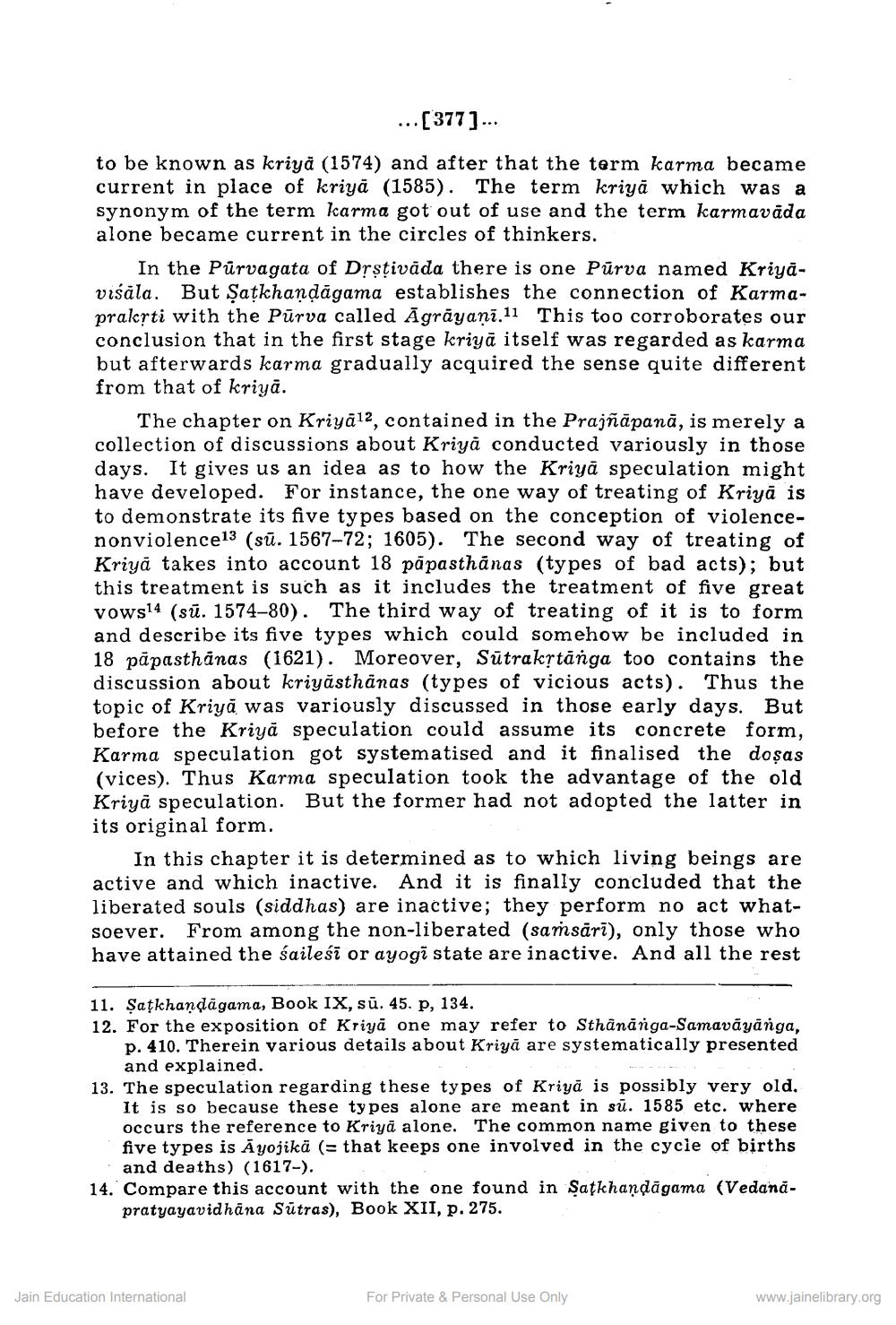________________
... [377] ...
to be known as kriya (1574) and after that the term karma became current in place of kriyā (1585). The term kriya which was a synonym of the term karma got out of use and the term karmavada alone became current in the circles of thinkers.
In the Purvagata of Drstivāda there is one Pūrva named Kriyaviśäla. But Satkhandagama establishes the connection of Karmaprakrti with the Pūrva called Agrāyaṇī.11 This too corroborates our conclusion that in the first stage kriyā itself was regarded as karma but afterwards karma gradually acquired the sense quite different from that of kriyā.
The chapter on Kriya12, contained in the Prajñāpanā, is merely a collection of discussions about Kriya conducted variously in those days. It gives us an idea as to how the Kriyā speculation might have developed. For instance, the one way of treating of Kriyā is to demonstrate its five types based on the conception of violencenonviolence13 (sū. 1567-72; 1605). The second way of treating of Kriya takes into account 18 pāpasthanas (types of bad acts); but this treatment is such as it includes the treatment of five great vows14 (sū. 1574-80). The third way of treating of it is to form and describe its five types which could somehow be included in 18 pāpasthanas (1621). Moreover, Sūtrakstānga too contains the discussion about kriyasthanas (types of vicious acts). Thus the topic of Kriya was variously discussed in those early days. But before the Kriyā speculation could assume its concrete form, Karma speculation got systematised and it finalised the dosas
(vices). Thus Karma speculation took the advantage of the old Kriyā speculation. But the former had not adopted the latter in its original form.
In this chapter it is determined as to which living beings are active and which inactive. And it is finally concluded that the liberated souls (siddhas) are inactive; they perform no act whatsoever. From among the non-liberated (sarsārī), only those who have attained the sailesi or ayogi state are inactive. And all the rest
11. Șatkhandägama, Book IX, sū. 45. p, 134. 12. For the exposition of Kriyā one may refer to Sthânănga-Samavāyānga,
p. 410. Therein various details about Kriyă are systematically presented
and explained. 13. The speculation regarding these types of Kriya is possibly very old.
It is so because these types alone are meant in sū. 1585 etc. where occurs the reference to Kriya alone. The common name given to these five types is Āyojikā (= that keeps one involved in the cycie of births
and deaths) (1617-). 14. Compare this account with the one found in Satkhandāgama (Vedana
pratyayavid hāna Sūtras), Book XII, p. 275.
Jain Education International
For Private & Personal Use Only
www.jainelibrary.org




